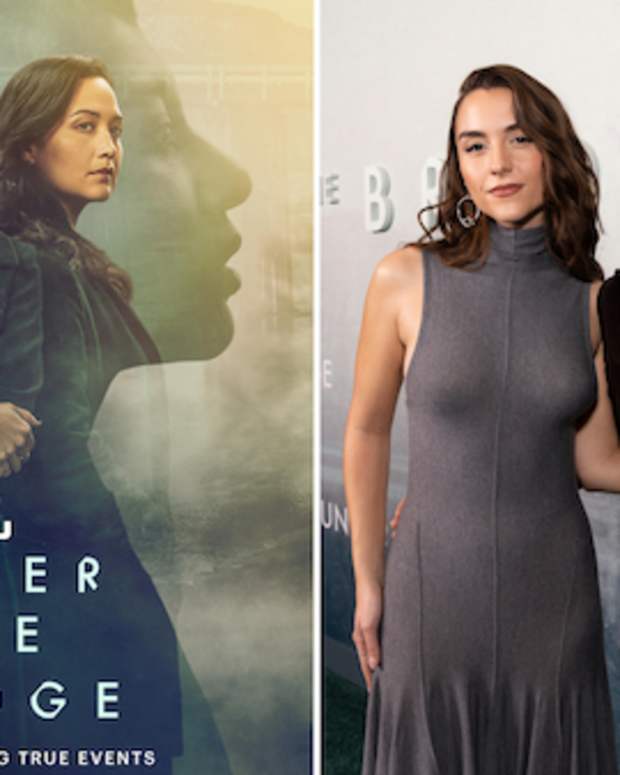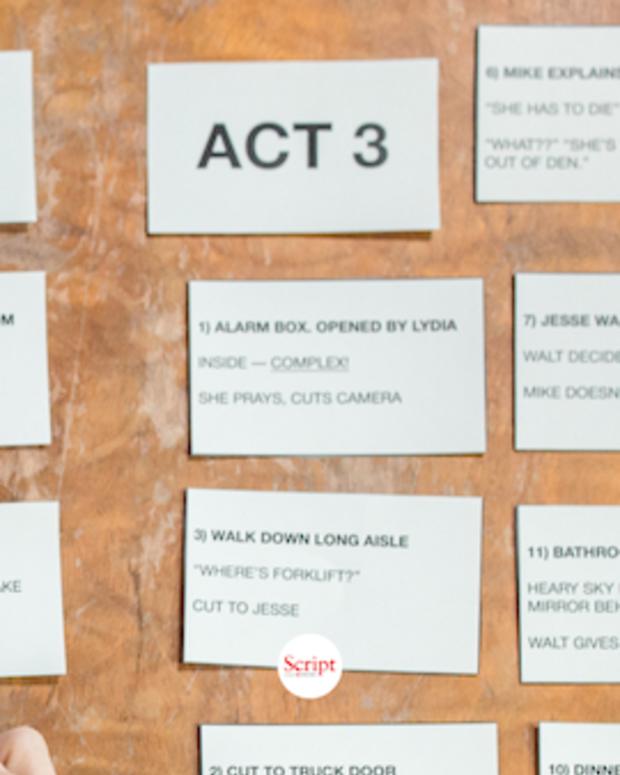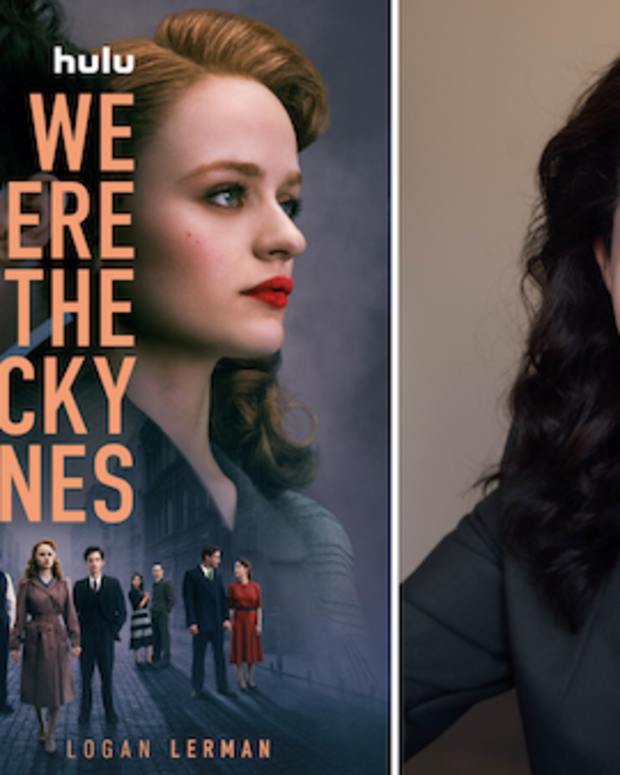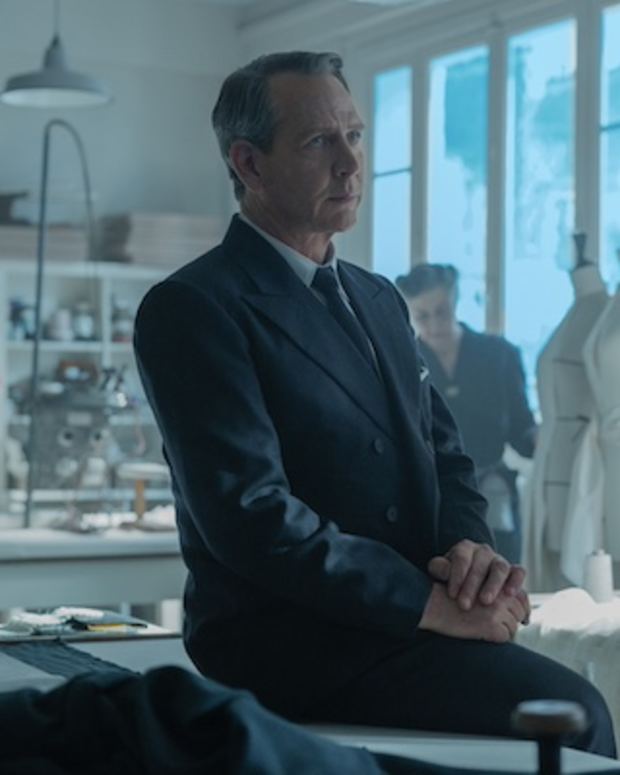WRITERS ON WRITING: Tate Taylor's Story Behind Adapting The Help
As a New York Times Hardcover Fiction Best Seller and one of the most blockbusting films of the summer of 2011, The Help found its bearings in a childhood friendship between the novelist and filmmaker. Writer-director Tate Taylor discusses how his belief in his friend Kathryn Stockett meant that he was going to make the movie, no matter what.
Click to tweet this article to your friends and followers!
By Tate Taylor
When I was five years old on a playground in Jackson, Mississippi, I threw rocks at a classmate who was wearing funny-looking glasses. Her name was Kathryn Stockett, and somehow that exchange began a friendship.
Our shared characteristics created an early bond between us but also set us apart from most of our peers in Jackson. We were creative, a little weird, and always looking for trouble. Often misguided by these traits, we had a bumpy adolescence but eventually turned our energy toward the arts. Kathryn sought out to be a writer in New York. I set off to California to become ... well, I didn’t know. I just knew I wanted to be a part of the storytelling process. I thought it would be through acting, and I eventually found myself studying at The Groundlings where, to my surprise, I discovered a love of writing. But, just because I loved writing didn’t mean I was good at it. I wrote crap. Real crap. And my good friend Kathryn was on the other coast writing some real crap, too. We would send each other our crap and critique it. We were quite honest about the crappiness of it all but always found a way to encourage each other by pointing out the positives in our work. If no positives were to be found, well, we’d just make one up for each other. That’s friendship.
We each slowly got better through the years, and I went on to gain some mild success with a short film and, a few years later, with a feature-length indie film. All the while Kathryn was writing a book about “maids in Jackson, Mississippi during the ’60s.” She was so tight-lipped about it, that description is literally all I got out of her for those five years. She later confessed that she didn’t want the crap factor to be a part of our sharing anymore. She wanted the book to be as good as she thought it could be before I read it.
Script EXTRA: 8 Ways to Give & Take Notes From Your Peers
After receiving her 60th rejection letter from agents, she finally handed me the manuscript over lunch in Manhattan. She explained how her book would never see the light of day and that she would now allow me to read it. She hated handing it over. She feared the truth from me, perhaps the reasons from my lips explaining why her book was continually rejected.
On a flight back to L.A., somewhere over Ohio, my skin began to tingle in awe of the book she had written. My friend had done it, and I immediately realized it had to be a film. I began adapting it in my head as I turned the pages. I had never adapted a book before, and I didn’t care. I knew this world, I saw it and I realized what had been missing from my writing all these years: complete passion for a story which I knew I had to tell. I was obsessed with the story before I landed in L.A. I immediately called Kathryn and told her that those 60 agents were idiots and this would get published. And I told her I had to make it into a film.
After several months of challenging negotiations (everyone was telling Kathryn she was crazy to give the rights to me), I eventually convinced her to trust me with it. I began adapting her novel in May of 2008. This date is significant because it was a full 10 months before the book hit shelves and a few months before she had a publisher. I wrote with complete freedom. No fans standing on my shoulder, no studio or producers suggesting how the story should unfold. It was just me going for broke at my computer, setting off on a journey to tell the story the way I saw fit. I now realize I may never have that luxury again. Oh, what a scary, lonely and exhilarating luxury it was.
Script EXTRA: How to Secure Film Rights for a Book FREE Download!
I first had to figure out how to boil down 500 glorious, rich and merited pages into a manageable screenplay. After a week of hitting my head against a wall as how to do this, I gave myself a gift. The gift of writing it long, as long as I wanted. I decided to adapt the whole damn novel and get to know these characters and see each scene as I would direct it. I approached it as if writing a script of short stories that I would somehow connect. The first draft was well over 200 pages, but in that stack of black and white I knew there was a movie somewhere. Then began the surgery.
As I cut and began to weave the story together for the screen, I realized that some moments in Kathryn’s book didn’t translate to film and, more importantly, there were moments that were not realized in the book that I knew had to be realized in the screenplay to pull it all together. It came down to three important changes.
The first change addressed Kathryn’s choice to tell the story in the three voices—Aibileen, Minny and Skeeter. I knew from the start that, onscreen, The Help should be predominantly Aibileen’s story. As our narrator, Aibileen was the best one to take us on this emotional journey. The problem was that she was such a quiet character. It takes her a long time to find the courage to work with Skeeter. In the adaptation process, I realized that if told linearly, it would be a constant struggle to maintain Aibileen as a central force. That’s when I made the decision to open the film with Aibileen and Skeeter’s first interview. It was the only way to give us a hard look at this quiet force; a way to understand Aibileen’s pain and silence and, ultimately, the power within her that was yet to come:
JACKSON, MISSISSIPPI: 1963 INT. AIBILEEN’S HOUSE — KITCHEN — EVENING
AIBILEEN, black, 53, stands at a kitchen sink washing dishes. She wears a yellow dress with black piping.
Two framed portraits hang on the wall above her: Jesus Christ and an UNKNOWN YOUNG BLACK MALE wearing thick glasses. Aibileen swallows hard.
AIBILEEN
I was born in 1911 ... Chickasaw
County, Piedmont Plantation.
An UNSEEN WOMAN interviews Aibileen.
WOMAN (O.C.)
Did you know as a girl,
growing up, that one
day you’d be a maid?
AIBILEEN
Yes, ma’am. I did.
WOMAN (O.C.)
And you knew that because?
AIBILEEN
My momma was a maid.
My grandmomma was a
house slave.
The woman repeats Aibileen’s answer slowly as she writes.
WOMAN (O.C.)
A ... house ... slave.
Aibileen looks to the floor for a moment.
WOMAN (O.C.) (CONT’D)
Do you ever dream of
being something else?
Aibileen nods sadly. The room is quiet.
WOMAN (O.C.) (CONT’D)
What does it feel like to raise
a white child when your own
child’s at home ... being looked
after by somebody else?
AIBILEEN
It feel ...
Aibileen’s hands tremble as she glances sadly up to the picture of the young black male.
FADE TO BLACK:
The second change was, in the novel, Minny never worked for Hilly Holbrook. She worked for Missus Walters in Missus Walters’ home. The feud between Hilly and Minny was born from the fact that Minny refused to come work for Hilly after Missus Walters was put into a nursing home. Early in the adaptation, I kept bumping into this buffer between Hilly and Minny, the two characters that hated each other the most.
I finally realized that, for a more immediate and tenser conflict, Minny needed to work directly for Hilly. Putting these two in the room together every day would set off the fireworks that lead to delicious visual and verbal conflict:
EXT. HOLBROOK HOUSE — CONTINUOUS
The Holbrook house is a two-story brick with a huge, beautiful yard shaded by ancient oak trees.
Hilly, Missus Walters, and Minny walk toward a station wagon parked on the street. Hilly barks over her shoulder.
HILLY
Minny, William took Billy
over to Brent’s Drugs for
an ice cream. Hurry back
and get him down for his
nap. No dilly dallying.
They pass a sign stuck in Hilly’s yard that reads: "YARD OF THE MONTH!"
AIBILEEN (V.O.)
Once Missus Walters’ arteries
went hard, Miss Hilly moved her
into her house and fired the maid.
She had to make room for Minny,
too. See, Minny about the best
cook in Mississippi, and Miss
Hilly wanted her.
Hilly reaches the car and gets into the passenger seat. Minny helps Missus Walters into the backseat.
AIBILEEN (V.O.) (CONT’D)
I lost my own boy, Treelore,
four years ago. After that,
I just didn’t want to live anymore.
Minnie hurries around to the driver’s side of the car, pie in hand.
AIBILEEN
It took God and Minny to get
me through it. Minny my best
friend. A old lady like me lucky
to have her.
Script EXTRA: Adaptation - Faithful or Original?
Once this was established, I was able to have Minny cross Hilly with the ultimate sin: Minny using Hilly’s bathroom and being fired for this unforgivable insubordination. This also allowed me to weave in the theme of toilets and segregation as it directly related to Hilly and Minny.
The third major change dealt with Charlotte Phelan. In the novel, Charlotte ultimately tells Skeeter what happened to Constantine, but Skeeter decides not to put Constantine’s story in the book. In Kathryn’s version, Skeeter tells us why: “I just couldn’t bring that kind of shame to my own mother.” I realized that in a film, Constantine’s story had to be in the book. We had to see and realize the shame of what Charlotte did to Constantine. After all, for me this is what the novel and film is about—the horrible choices we make that affect and hurt people and an understanding as to why we make these hurtful choices in relation to societal influence.
This then led me to the realization that an audience will want to know how this inclusion in the book would affect Charlotte. She needed an arc, and she needed some sort of redemption or, in the least, closure. I chose to have Charlotte realize her shortcomings and, as a result, what a courageous thing her daughter did so that Aibileen and Minny could tell their stories:
INT. PHELAN HOME — RECEIVING ROOM
Skeeter and Charlotte cross the living room together.
CHARLOTTE
Skeeter, do you have plans
tomorrow?
SKEETER
No, ma’am.
CHARLOTTE
Good.
Skeeter leads her mother to a sofa, helps her sit.
CHARLOTTE (CONT’D)
Because we are going shopping.
No single daughter of mine is
going to New York City,
representing the great state of
Mississippi, without a proper
cosmopolitan wardrobe.
SKEETER
How do you know about
New York?
CHARLOTTE
Oh, well, Miss Stein called
last night.
Skeeter looks away nervously.
CHARLOTTE (CONT’D)
Courage sometimes skips a
generation.
Skeeter turns back to her mother.
CHARLOTTE (CONT’D)
Thank you for bringing it back
to our family.
Skeeter nods, relieved. But also concerned.
After Kathryn got a publisher, a clock began ticking between my ears. I had no guarantee that the book would be a success, but I just couldn’t see how it wouldn’t. I knew that I had to finish the adaptation before The Help hit the shelves, and I knew it better be damn good if I was ever to have a chance of getting someone to stand behind me on my desire to direct.
In the end, Kathryn loved the adaptation and, well, you know the rest of story: Adapting and directing The Help was a once-in-a-lifetime opportunity. I’ve already accepted the bittersweet fact the nothing quite like this will or even could happen this way again in my career. I owe my good friend Kathryn the world for believing in me and believing in us. Thank God she didn’t run too far from that dumb kid with a handful of rocks.
Originally published in Script magazine January/February 2012
Writer-director-actor-producer TATE TAYLOR graduated from the University of Mississippi. In 2004, he made his directorial debut with the short film Chicken Party, which he also wrote and starred in. The short went on to win eight festivals and place at 12 more. Pretty Ugly People was his first feature as a writer-director, released in the fall of 2009. He also has several acting credits in film and TV, including 2010’s Oscar®-nominated Winter’s Bone. Taylor has established a program based in Mississippi with Kathryn Stockett, author of The Help, that provides creative and structural mentoring for writers and filmmakers.
Get tips on creating a hit adaptation in our on-demand webinar
Using Adaptations as the Perfect Source for Your Script







![[L-R] Omar J. Doresy and Sebastian Maniscalco in Bookie (2023).](https://scriptmag.com/.image/ar_8:10%2Cc_fill%2Ccs_srgb%2Cfl_progressive%2Cg_faces:center%2Cq_auto:good%2Cw_620/MjA2NjY1MDM3NzA2Njk5OTgw/omar-j-john-johnsonmax.jpg)





